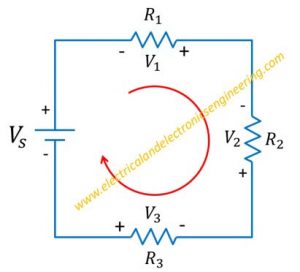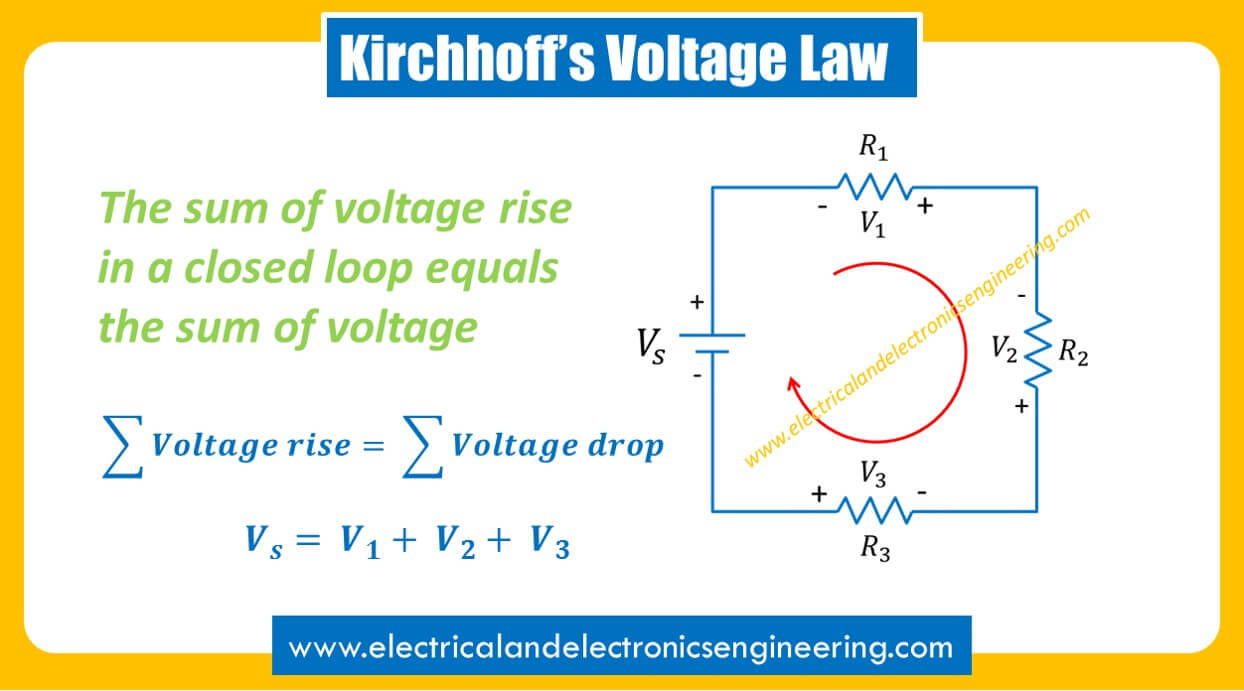Kirchhoff’s Voltage Law explains the behavior of voltage in closed electrical circuits. According to Kirchoff’s voltage law:
The sum of voltage rise in a closed loop equals the sum of voltage drop.
Mathematically:
ΣVoltage rise = Σ Voltage drop
Consider a series circuit with three resistors:

Starting from source voltage, by following the direction of the current (red loop) the source represents a voltage rise. (Vs). Next, we have resistor R1 which has a voltage drop V1. Next in loop R2, and R3 also cause a voltage drop V2, and V3.
If we apply Kirchhoff’s Voltage law in loop we have the following equation:
Vs = V1 + V2 + V3
Let’s solve another example to understand it:

Starting from voltage source Vs, the direction of current causes a voltage rise across Vs. Across resistors R1, R2, R3, R4 we have voltage drops V1, V2, V4, V5. The direction of current in voltage source is from positive to negative polarity. As per convention, the voltage source V3 is also a voltage drop. Finally, we have our equation:
Vs = V1 + V2 + V3 + V4 + Vs2
Revision:
